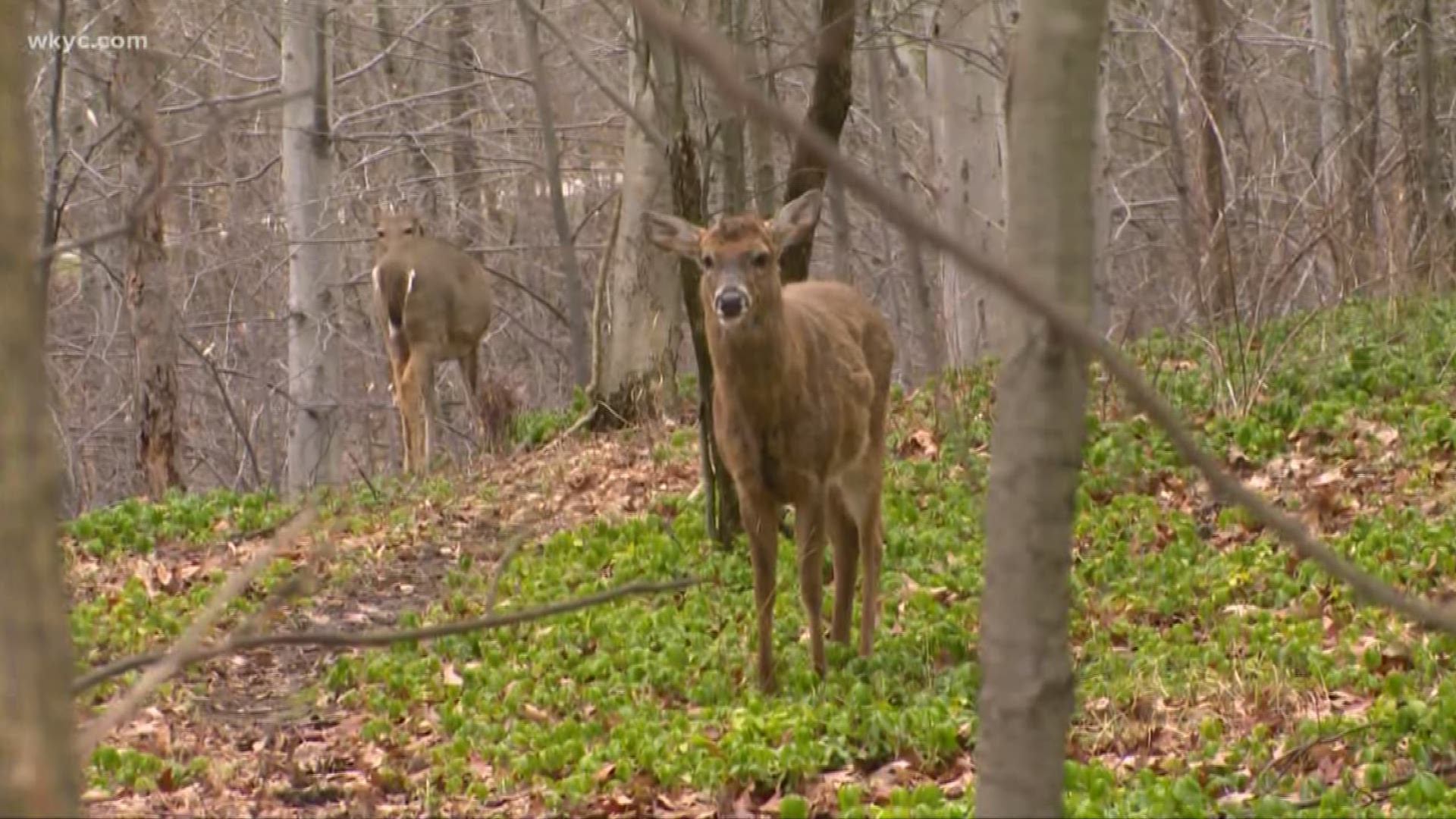OHIO, USA — *Editor's Note: The video in the player above is from a previous report.
As drivers head into a peak time for deer-related crashes, the Ohio Department of Insurance, Ohio State Highway Patrol and Ohio Department of Natural Resources urge motorists to be cautious on the roads.
According to the Ohio State Highway Patrol, since 2016, there have been 100,672 deer-related crashes in Ohio, including 47% of the crashes occurring in October, November, and December.
Most of the time, the deer-related crashes resulted in property damage, but a small proportion of these accidents resulted in 27 fatal injuries and 28 motorists being killed.
“As we enter the peak season for car-deer collisions in Ohio, I encourage drivers to use extra caution and slow down, especially at dawn or dusk when deer are more active,” said Governor DeWine. “A crash with a deer can be just as destructive as a crash with another vehicle, so it’s important that drivers remember to stay alert and watch out for animals crossing the road.”
In the state, the top counties affected by deer-related crashes include Stark, Richland, Lorain, Trumbull and Hancock. I-71, US-30 and I-80 have been the leading roadways in the state where deer-related crashes have occurred.
“Always avoid distractions and keep your full focus on the roadway,” said Colonel Richard Fambro of the Ohio State Highway Patrol. “If you see a deer, slow down, but do not swerve. If you strike a deer, move to a safe place if you are able, turn on your hazard lights, and report the crash.”
The reason for many deer-related accidents in the fall and early winter months is because of the fall breeding season.
“As motorists have likely noticed, deer are very visible and active in the fall,” ODNR wildlife Chief Kendra Wecker said. “If you see one deer, be on the lookout for others nearby. Deer rarely run alone.”
The risk of an accident involving a deer can be dangerous, but also very costly for your pocketbooks. According to a recent data estimate, the average insurance claim for a deer-related accident in Ohio is over $4000.
"In the event of an accident, it's important to have adequate insurance for financial protection," Ohio Department of Insurance Director Judith L. French said. "Now is the time for Ohioans to contact their insurance agents to complete an insurance review."
The press release also offered the following tips on how to avoid animal collisions:
How to avoid animal collisions:
Scan the road ahead: Looking ahead helps provide enough reaction time if an animal is spotted. Also, remember some animals, like deer, move in groups, so when there is one, there are usually more in the area.
Use high beam headlights if there is no oncoming traffic: This can help you spot deer or other wildlife more quickly and give you time to slow down, move over or honk the horn to scare the animal away. High beams also help in spotting animals’ reflective eyes.
Be extra cautious at dawn and dusk: Deer tend to be more active in the early morning and at dusk. That’s why these are peak times for deer-vehicle collisions.
If a collision is unavoidable, apply the brakes firmly and remain in your lane: Swerving to avoid an animal can often cause a more serious crash or cause you to lose control of your vehicle. Drivers who swerve to miss a deer and hit something else may be charged for an at-fault crash.
Always wear a seatbelt and remain awake, alert, and sober: The chances of getting injured when hitting an animal are much higher if you don’t have your seatbelt on. If you’re distracted or drowsy, you’re not properly scanning the road for deer and could end up spotting them too late.
“Although deer and other animals are unpredictable, there are actions you can take to help prevent a crash or reduce the damage from a collision,” said Ed Conley, director, insurance operations for AAA Ohio Auto Club.
What to do if you hit a deer:
- Following the collision, call the police.
- Avoid making contact with the deer/animal. A frightened and wounded animal can be dangerous and pose a threat when approached or might further injure itself.
- Activate the vehicle’s hazard lights whether it’s light or dark outside.
- If possible, move the vehicle to a safe location out of the roadway, and wait for help to arrive.
- Drivers should contact their insurance agent or company representative as quickly as possible to report any vehicle damage.
If you are interested in looking at a statistical breakdown of deer related crash information, click here.
*Editor's Note: The video in the player above is from a previous report.

